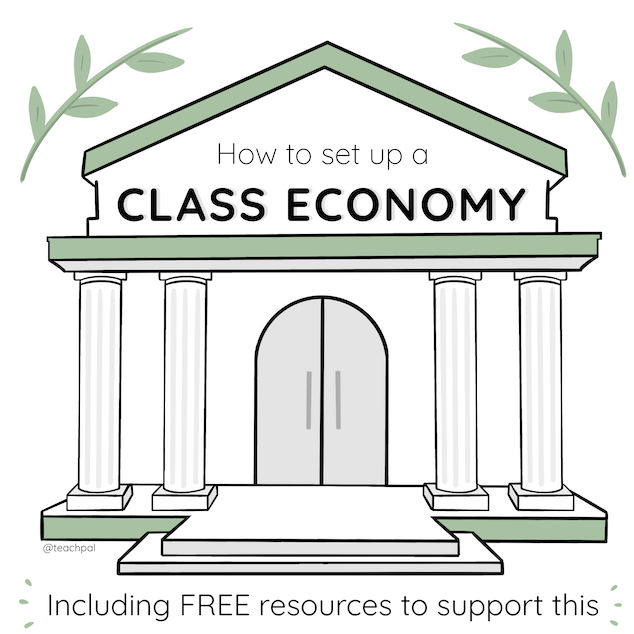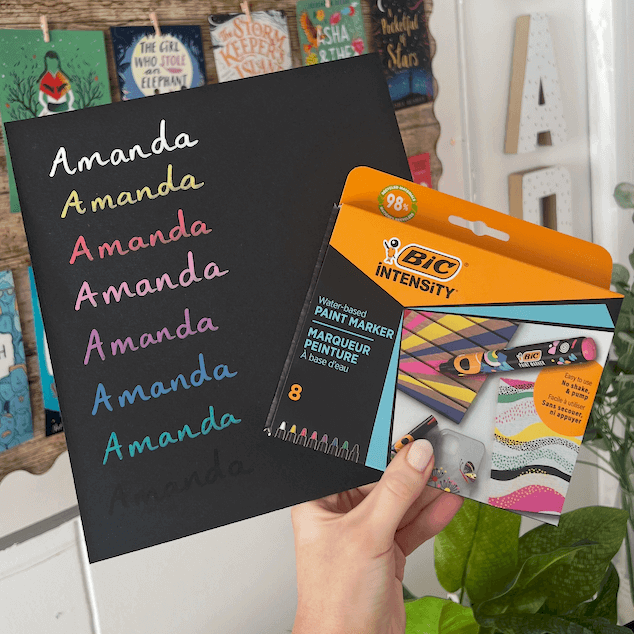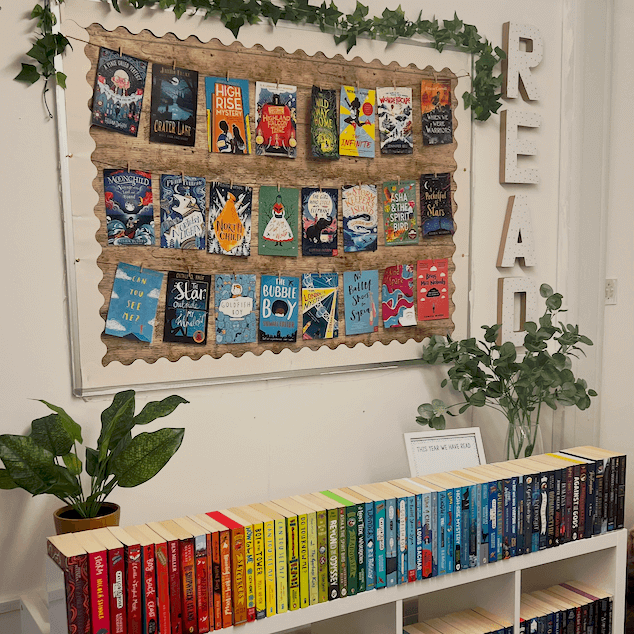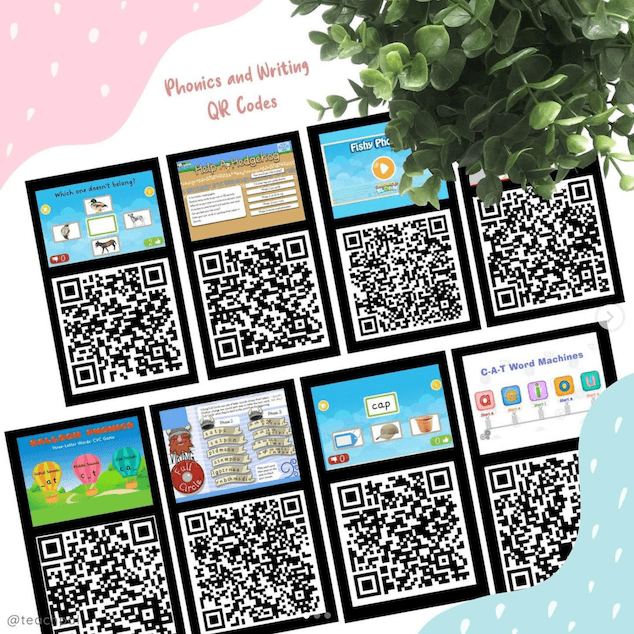Establishing a class economy has allowed children in my class to gain a better understanding of financial literacy. Children have learned how to maintain their own budget, explored the links between jobs and money, and have extended their vocabulary in a real-life context. They also have to make the big decision of saving up their money or spending it.
Creating the Class Economy
Before you implement anything, introduce the idea of having a class economy to your children. Have a discussion with them about how it might work in the classroom, as this gets them on board and involved, so that they have ownership of it and feel their decisions are valued. An important part of this process is coming up with a list of potential class jobs together. Have the children create a list of responsibilities for each job so that they fully understand what each job entails, but remember to guide the process in the direction you’re aiming for. I did this as a carousel activity; children worked in groups on flipchart paper and rotated around the class. Two jobs I included myself were bank managers, who update our class economy spreadsheet at the end of each week, and HR manager, who the children can contact if they have any concerns, questions or need help deducting tax etc. Model each job, and then create roles and responsibilities cards as a visual reminder for the children moving forward.
Once you and your class have created the roles and responsibilities, it’s time to discuss wages or salaries, and agree on an amount for each job. How you go about this will depend on your class. I use monetary values in £10 increments to keep things simple and somewhat realistic, but you could use smaller/larger values or even use points instead of money. You might decide that some roles require a lot more work than others, and therefore pay more for those roles. Or you might instead set an equal wage across all roles. If you do set variable pay dependent on the workload, be careful when rotating the roles assigned to each child to ensure that they all get a fair and equal chance to earn the higher amounts.
Agree on any other forms of income; the children are great at coming up with ideas. Some of the ideas I’ve had are money for completing homework, caught being kind/positive role model, pupil of the week, star writer, secret mission and book reviews. Be careful with this; we’re not looking to reward children for knowing more than their peers, so it should never be about getting answers correct or working faster. Think about things that all children in the class are able to do if they put the effort in.
Next, look at creating a list of expenditures, which begins to make children aware of the many things people have to pay for. The children aren’t as eager to come up with as many ideas for this, and I can see why! In my class I therefore don’t have too many expenditures, and they’re kept small enough to not become an annoyance to the children. I’ve seen people online impose fines, but that goes against my pedagogy and I wouldn’t advise it. I think it’s important that any system in place in the classroom is a completely positive experience for the children. The expenditures we have, include rent, tax on wages or salary, and a fee to purchase lost stationery. They’re really just there to be a fun way to show that everything costs something; their income far exceeds their expenditure to keep the experience positive.
Displaying the Class Economy
Once you have discussed all of the above, you can create a small display showing the class jobs, the roles and responsibilities of each, and a list of income and expenditure. If you’d like to download my versions of all of these, you can find the links to my free resources below. You can use a spreadsheet to record the children’s names and balances, with a separate sheet showing only the class bank balance, and this can remain open on your class laptop/display for the children to regularly refer to. If you’re not comfortable using a spreadsheet you can record balances manually although it won’t be quite as interactive this way.
Using the Class Economy
Have the children apply for their jobs. Discuss what makes a good job application and talk about their strengths, qualities and experiences. This is quite a nice thing to do at the beginning of the year as it allows you to find out more about them too. I do this using Microsoft Teams and have them fill out an online application, but you can use my free template either, which you’ll find in my class economy resources post below. I quite like to rotate the jobs, so that it is fair for everyone. You don’t need to have them re-apply for jobs, just rotate everyone around.
Teach children the importance of not sharing their financial information and therefore not sharing how much money they have each week. Let them know that this is their private information, and it stays between them and their bank. Model how to use the spreadsheet and how to record income and expenditure on the income and expenditure record, both of which you’ll find in my class economy resources post below. The role of bank manager helps children learn the importance of keeping other people’s details private. So many life skills! What I do share at the end of each week (and sometimes when they ask) is what amount WE are on. Again, just keep the spreadsheet open and you can quickly open it full screen whenever you want to display it.
At the end of every week/month, however you want to do it, give all children the opportunity to spend their money, and not just the children with the most money or anything to this effect. This does not need to be, nor should it be, on physical items. You’ll be surprised at the different ideas children come up with when you ask them. Some of our favourites are sit with the teacher at lunch, sit in the reading area, and a no homework pass. I only let them choose the homework pass once per term, not that I’m that fussed about homework, but that’s another post for another day.
Try to ensure that there are different value rewards available, as we want everyone to have the chance to work towards something. This also helps teach children that they can save towards larger rewards, rather than spending everything straight away for instant gratification. Remember, the spreadsheet will automatically adjust the class balance based on individual balances, so the children will need to keep track of their reward purchases separately as the idea is that the class balance is not reduced by individual reward purchases.
Encourage building points collectively; teach the children that they are all building their class economy together to work towards a whole-class reward at end of each term. I like to set my class a challenge which requires them to work together and support each other, and this drives our whole-class economy. If they can get over a certain amount collectively, they all get hot chocolate, wear their pyjamas and watch a film at the end of term. I use this as an opportunity to watch something educational e.g., we watched Blue Planet when we were doing our plastic pollution topic.
It takes a while to get used to using a class economy; allow the time to set it up properly so that the children fully understand it. You’ll surprised how much children will learn from it, especially if you embed it as part of your maths lessons. The NatWest Money Sense website has some fantastic videos, lesson plans, resources and games at https://natwest.mymoneysense.com/teachers/. Also, allow time at the end of the week to give your class time to do their jobs while the bank manager adds everyone’s money, as this reinforces the idea that it is an integral part of your classroom management that everyone needs to contribute to.
How does class economy deal with negative behaviour? It’s not designed to punish. Only the bank manager knows the individual children’s balances, so the children are not able to compare balances, meaning no hierarchy forms. It’s a tool to praise children and thank them for their hard work, their perseverance, and for following the school values. It also fosters positive relationships, promoting teamwork through a shared goal, whilst still giving children individual choices that keep them personally invested.
All of the above is how I use a class economy, but if you have different behaviour needs in your class, you need to think about how you will support these children in your class and that may mean doing things a little differently to me. Think about why children are behaving in a certain way and mould the class economy around their needs. Try get to the route of the problem by truly understanding your children and their behaviour; simply taking away points and giving positive praise alone won’t be enough. Jen @goodmorningmissfoster over at Instagram has amazing live videos to support you with this, and is making a positive change in the way teachers support behaviour through her Positive Pathways Project.










